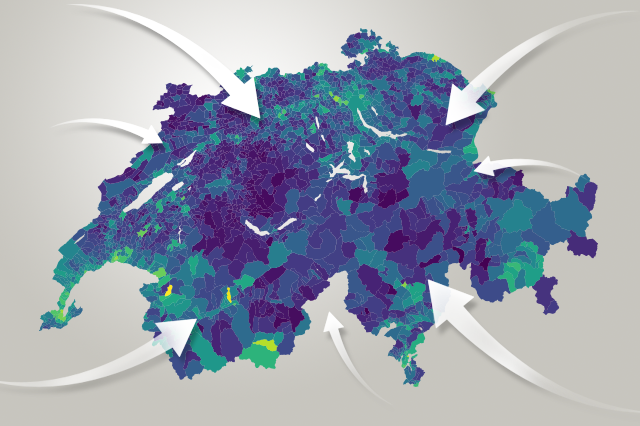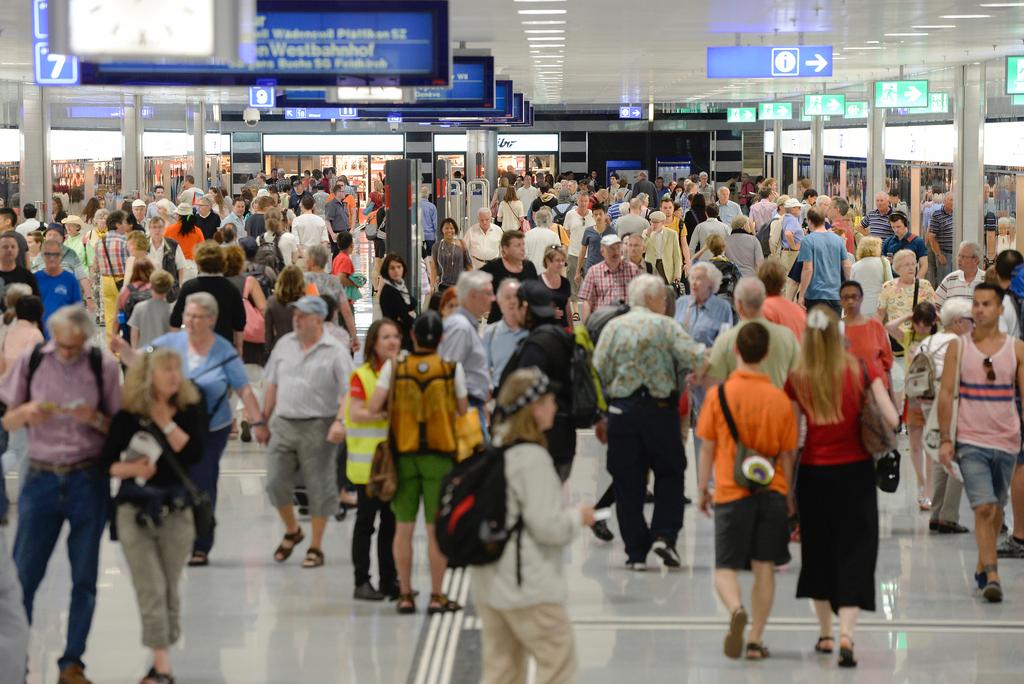With 244 million immigrants in the world, which country has the most?
With nearly 30% of the population born outside of its borders, Switzerland is one of the European countries with the highest proportion of foreigners. Globally, the Gulf countries host the most migrants. Still, contrary to popular belief, these rates have remained relatively stable over the past 25 years.
In absolute terms, the United States remains the champion of immigration – with about 20% of the world’s migrants. Then come Germany, Russia and Saudi Arabia – who together host 14%.
While the majority of migrants live in North America and Europe, last year saw more migrationExternal link between developing countries than from developing countries to developed ones.
According to UN statistics, the following Gulf countries have the most migrants compared to their total population: Bahrain, Kuwait, Oman, Qatar, Saudi Arabia and United Arab Emirates.
Although NGOsExternal link regularly denounce abuses against migrant workers in the Gulf countries, these countries depend heavily on foreign workers to sustain economic growth. A reportExternal link from the International Organization for Migration shows that in Gulf countries, people generally have a favourable opinion of immigration.
Note that the definition of immigrant used here is based only on the country of birth, and not on the nationality of the person. Anyone born in a country other than the one lived in is considered an immigrant. According to this definition, immigrants account for 30% of the Swiss population (24.6% considering nationality rather than place of birth). Thirty nations have a higher percentage of immigrants than Switzerland. The vast majority of them are city-states like Luxembourg, Monaco and Singapore.
The graph below shows the changing number of immigrants from 1990 to 2015, arranged by geographical region and selected countries. A recent reportExternal link from the UN made headlines when it stated that the number of international migrants had increased by 41% since 2000, bringing the total number to 244 million globally. The percentage increase in the number of migrants is impressive but misleading because it does not take into account the growth of the world population, which was 20% over the same period.
If one shows the total number of international migrants relative to the world population, we can see that this proportion has remained relatively stable over the last 25 years – around 3% – which means an increase of only 0.5 percentage points since 2000.
Migration series
Voting by the Swiss people to limit foreigners; Brexit; tensions within the EU to cope with the influx of asylum seekers – immigration is a key concern across the continent and beyond.
In Switzerland, as in the UK, the government is under pressure to limit the influx of immigrants at the risk of jeopardizing access to the European market. Through graphics, swissinfo.ch presents a series on immigration to illustrate these pressures.
From global migration flows to the evolving Swiss population, these weekly graphics key figures to help better inform people.

More
Defining the 25% foreign population in Switzerland

In compliance with the JTI standards
More: SWI swissinfo.ch certified by the Journalism Trust Initiative





You can find an overview of ongoing debates with our journalists here. Please join us!
If you want to start a conversation about a topic raised in this article or want to report factual errors, email us at english@swissinfo.ch.